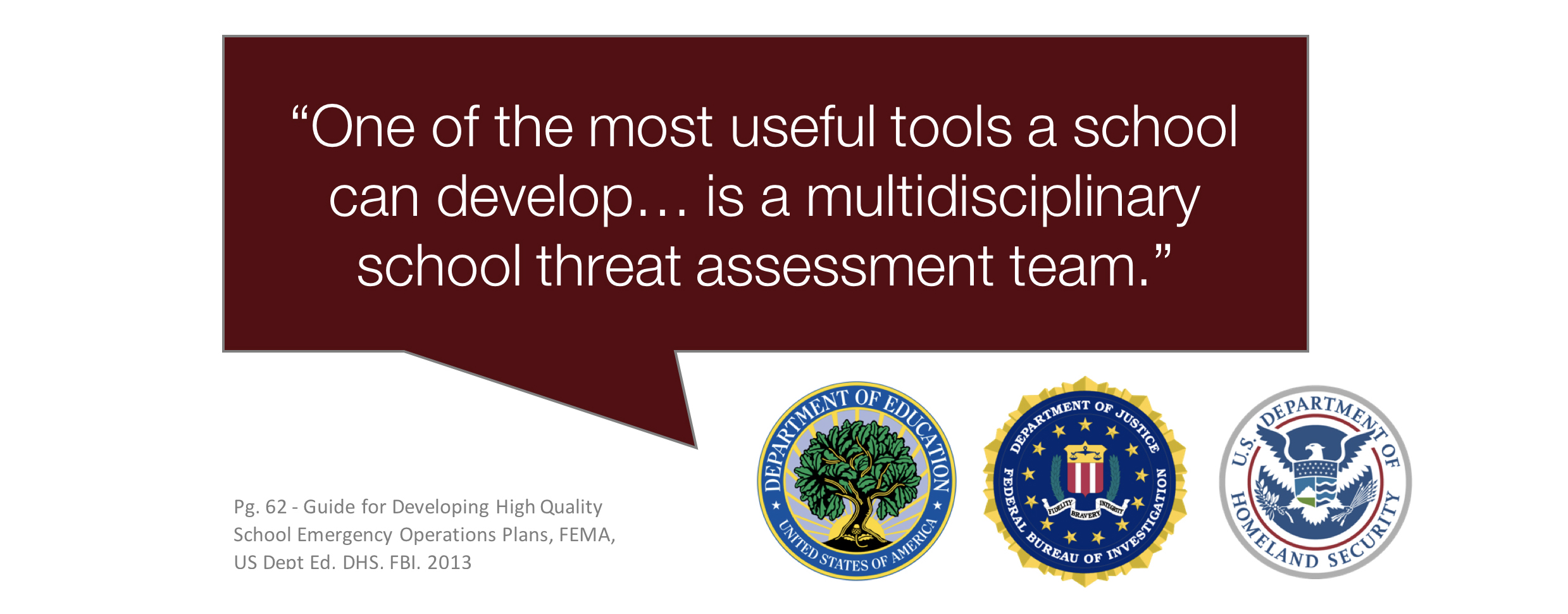TxSSC
School Behavioral Threat Assessment Toolkit
1.0 Introduction to Behavioral Threat Assessment and Management
Responding to an active threat event and knowing what to do are, unfortunately, skills which teachers and administrators need to practice and perfect. We know that school staff are most interested in being preventive and proactive, not just reactive. After an event occurs in a school, school staff, parents, and community members want to know how it could have been prevented.
Research of U.S. school shootings has shown that these violent events can be prevented because the acts are typically planned in advance, the actors tell others beforehand about their plans, and the acts are often carried out because there is a level of desperation or the view that violence is the only option left to solve problems. In 2019, the U.S. Secret Service National Threat Assessment Center (NTAC) released a report after studying 41 incidents of targeted school violence that took place in U.S. K-12 schools between 2008-2017. After studying the behaviors, motives, and tactics of the school attackers, their research suggested that many of the attacks could have been prevented. While there is no profile for a school attacker, most of the targeted violence incidents were not impulsive in nature and other people often knew about the attacker’s plan. A report published in 2021 confirmed that many attacks are preventable. After studying 67 incidents of disrupted plots against K-12 schools between 2006-2018, the NTAC found that those who are considering targeted school violence often exhibit observable behaviors, and when those behaviors are reported to the appropriate people, tragedies can be avoided. Additionally, those who plotted school attacks almost always shared their intent to do so with others.
Behavioral threat assessment and management (oftentimes referred to as threat assessment) provides an evidence-based approach toward identifying students or other individuals who pose a threat, intervening with appropriate resources, and ultimately improving the safety and well-being of the individual of concern, the situation, and the school.

The purpose of this toolkit is to provide you with an introduction to threat assessment, and to help you implement what FEMA and the Department of Education call “one of the most useful tools a school can develop…”(U.S. Dept. of Education, 2013, p. 62).
In July of 2018, the U.S. Secret Service and Department of Homeland Security’s National Threat Assessment Center released a school-specific guide to threat assessment entitled Enhancing School Safety Using a Threat Assessment Model: An Operational Guide for Preventing Targeted School Violence. This publication, as well as the summary brief that accompanies it, provides the foundational underpinnings of this toolkit.
Keeping our schools safe involves not just responding to violent events but also working to prevent them as well. Behavioral threat assessment and management is a means to do just that.